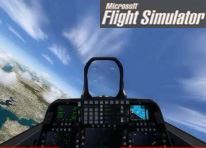With this system a user can use Microsoft’s Flight Simulator to generate real life scenarios based on a database that Microsoft has grown over the course of 40 years.
It’s often interesting to see how our customers find uses for our products that had never occurred to us.
We recently introduced our FlightSim package which is designed around Microsoft’s Flight Simulator software, a third-party package that outputs an Ethernet stream based on the data generated by Flight Simulator, and our MACC II system which translates the Ethernet data into one of a large number of avionics interfaces including ARINC 429, ARINC 717, CAN Bus, MIL-STD 1553, RS 232/422/485 and several others.

With this system a user can use Microsoft’s Flight Simulator to generate real life scenarios based on a database that Microsoft has grown over the course of 40 years. This database includes avionics descriptions for a large number of aircraft as well as physical descriptions of airports around the world. Canned scenarios produce realistic data describing a specific aircraft type taking off from a selected airport, cruising and then landing in any other specified airport. Of course, the user can customize the flight as desired.
We designed this system to enable testing avionics units be sending realistic data generated by the simulator. We know that many of our customers spend a great deal of time and money developing their own simulators so we thought we would help them by giving them access to one of the most invested simulators in the world at a small fraction of the cost of developing their own.

A customer had a different idea. They had developed a set of algorithms designed to detect anomalies in avionics data in real time. This would enable them to catch cyber attacks on their systems before they could do any damage. They needed to test their systems ability to detect anomalies and to counter them and decided that the way to do that was to create a simulation of a normal flight and then add anomalies to the simulation and see if they handled the anomaly properly.
The Flight Sim package was a perfect fit for generating the normal flight data. They then used our Unet 2 to monitor this data and store it into a data file using Exalt. This file could be used to reconstruct the flight avionics using our Data Reconstructor.
At this point, they ran into a problem. How could they introduce data anomalies into the generated data? The Exalt data file used by the Data Reconstructor is a binary file and so not easy to change. They approached us with this problem and we saw it as an opportunity to improve our software. We already had a binary to .csv export function that produced a human readable version of the data file. We added an import function to enable the Data Reconstructor to use the .csv file as its input file. Since a .csv file is easily changed, they could now add anomalies to the reconstruction.
This created an end-to-end ability to
- Generate a normal flight scenario in the avionics protocol of their choice.
- Monitor the “flight” to a file.
- Add anomalies to the scenario
- Generate a flight scenario that now included these anomalies
- See if the cyber detection algorithms behaved as designed
All this without writing a single line of code!
Talk to us about your next project, if our large range of avionics test, simulation and flyable systems can’t already fill your needs, we’ll be happy to discuss how we can tweak them until they can. Since the hardware, logic, firmware, drivers and applications of our products are all of our own design we have tremendous flexibility when it comes to catering our products to your needs.